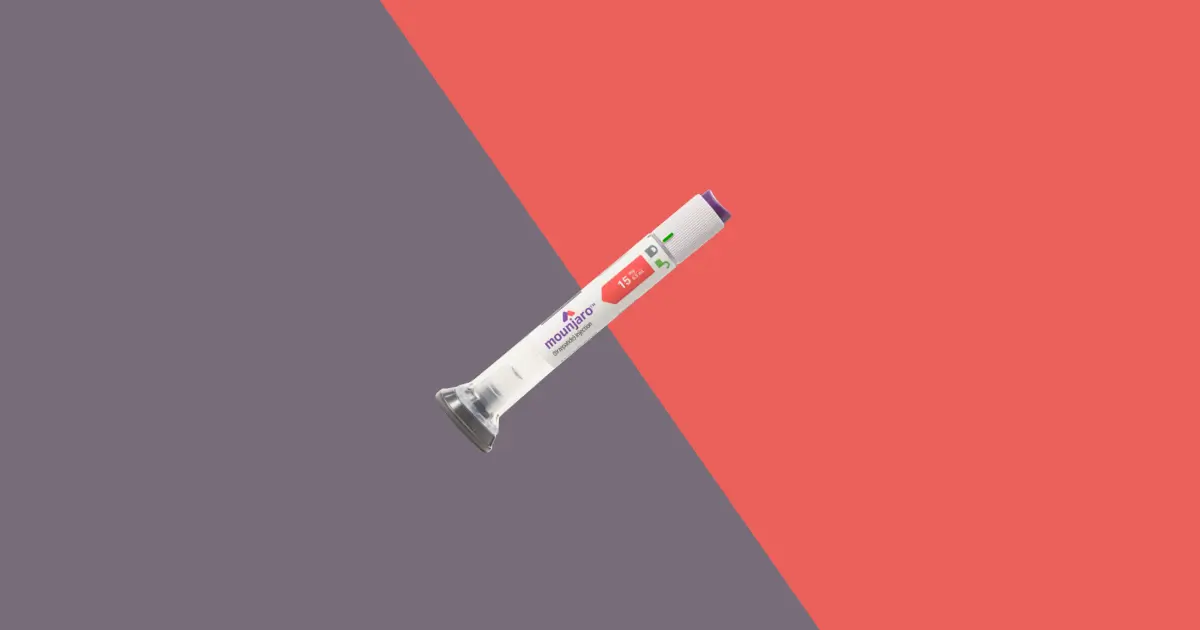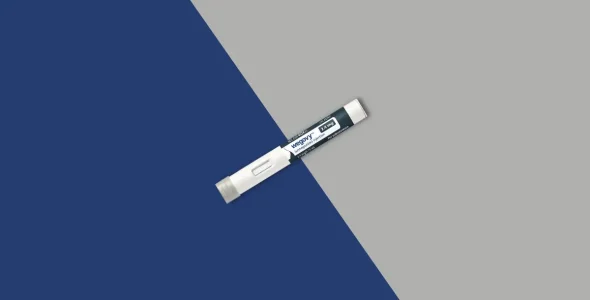Mounjaro alternatives for weight loss and diabetes compared
Key highlights
- Mounjaro (tirzepatide) is FDA-approved for Type 2 diabetes and may be prescribed off-label for weight loss.
- If Mounjaro is hard to find or you don’t want to use an injection, there are FDA-approved alternatives. For Type 2 diabetes consider Ozempic, Rybelsus, and Trulicity. For weight loss consider Zepbound, Wegovy, and Saxenda.
- Lifestyle changes like a healthy diet, regular exercise, good sleep and stress management can help with weight loss medications.
- When switching to a Mounjaro alternative, you may need to start at a lower dose and gradually increase depending on the medication. Talk to your doctor to determine what’s best for you.
Mounjaro (tirzepatide) is an FDA-approved injectable for Type 2 diabetes. Mounjaro is not approved for weight loss but some doctors may prescribe it off-label to help people with weight management if other methods haven’t worked.
People may look for alternatives to Mounjaro for many reasons including high cost, insurance coverage, limited availability, or side effects. If the medication is not affordable, hard to get, or causes discomfort, then other options for weight and diabetes management might be more suitable.
Let’s explore the best alternatives including medications and natural methods that may be more accessible, affordable, or better suited to your needs for weight loss and diabetes management.
What is Mounjaro?
Mounjaro (tirzepatide) is a prescription injectable medication approved by the U.S. FDA in 2022 to help control blood sugar levels in people with type 2 diabetes when combined with diet and exercise.
Mounjaro is part of the GLP-1 drug family, but it’s unique because it mimics two gut hormones: glucagon-like peptide-1 (GLP-1) and glucose-dependent insulinotropic polypeptide (GIP) receptor agonist.
This dual action may make Mounjaro more effective for both weight loss and blood glucose control as compared to other GLP-1 medications that target only one receptor, like Ozempic and Wegovy.
Mounjaro works by activating GLP-1 and GIP receptors in the brain and the pancreas. This helps regulate insulin after meals, controls blood sugar, slows stomach emptying, and reduces appetite, which leads to eating less and consequently losing weight.
The starting dose is typically 2.5 mg, which increases every four weeks until a maximum effective dose is reached. Mounjaro is available in dosage strengths of 2.5 mg, 5 mg, 10 mg, 12.5 mg, and 15 mg.
The most common side effects of Mounjaro may include:
- Nausea
- Diarrhea
- Vomiting
- Decreased appetite
- Constipation
- Upset stomach
- Abdominal (stomach) pain
When to consider alternatives to Mounjaro
You might consider alternatives to Mounjaro in the following situations:
- Cost issues: If Mounjaro is too expensive for you, especially if your insurance doesn’t cover it or you can’t afford it.
- Side effects: If you get nausea, vomiting, or gastrointestinal issues, or Mounjaro isn’t suitable for you because of other health conditions.
- Availability challenges: Mounjaro might be out of stock at pharmacies in your area.
Mounjaro alternatives for type 2 diabetes
Here are some common alternatives to Mounjaro for diabetes management:
1. Ozempic
Ozempic (semaglutide) is a once-weekly injection that helps control blood glucose levels in people with type 2 diabetes and provides significant weight loss benefits. It also reduces the risk of serious cardiovascular events, like heart attack, stroke, or death in people with both diabetes and heart disease.
In a study that compared Ozempic and Mounjaro, Mounjaro (in doses of 5 mg, 10 mg, and 15 mg) worked better than the 1 mg dose of Ozempic. Mounjaro improved blood sugar control and helped people lose more weight. For example, people taking the 15 mg dose of Mounjaro lost nearly twice as much weight as those on Ozempic.
Another study compared the highest dose of Ozempic (2 mg) with the 5 mg, 10 mg, and 15 mg doses of Mounjaro. People on the higher doses of Mounjaro (10 mg and 15 mg) lost more weight and had better blood sugar control than those taking the 2 mg dose of Ozempic.
The brand names Ozempic and Mounjaro are not approved by the FDA for weight loss, but similar medications made by the same companies with the same active ingredients are approved for weight loss under the names Wegovy and Zepbound respectively.
2. Rybelsus
Rybelsus (semaglutide) is an oral tablet that contains the same active ingredient as Ozempic but is taken once a day instead of being injected weekly. It can be a suitable option if you prefer not to give yourself an injection.
Like Mounjaro, Rybelsus is a GLP-1 agonist that helps lower blood sugar and may also help with weight loss. Although it’s not FDA-approved to reduce the risk of heart attack or stroke, studies suggest it’s safe for people with heart disease. GLP-1s may not be prescribed to people with a history of thyroid cancer or pancreatitis.
If you’re eligible, you could pay as little as $10 for Rybelsus with a copay savings card from the manufacturer. There’s also a patient assistance program available.
3. Victoza
Victoza (liraglutide) is another injectable GLP-1 agonist, but it needs to be injected once a day instead of once a week because it doesn’t stay in the body as long as Mounjaro and other alternatives.
Unlike Mounjaro, Victoza has proven heart protection benefits. It’s approved for people aged 10 and older. People taking Victoza may lose about 2% of their body weight in a year, while those on Mounjaro lose 6% to 8% in a shorter time. However, Victoza has fewer side effects compared to Mounjaro.
If you don’t have insurance or have limited coverage, you might be able to get Victoza for free through the manufacturer’s patient assistance program.
4. Trulicity
Trulicity (dulaglutide) is another once-a-week injectable GLP-1 agonist that helps lower A1C, similar to Ozempic and Rybelsus. Some people may also experience weight loss with it.
Like Ozempic, Trulicity has proven heart health benefits and is FDA-approved for type 2 diabetes in both adults and children as young as 10. Mounjaro is still being studied for children with type 2 diabetes, with results expected in 2025.
Trulicity pens are similar to Mounjaro pens, and the injection process is the same, so it might be easier to adjust to than other alternatives.
With a copay savings card from the manufacturer, you could pay as little as $25 for your Trulicity prescription.
5. Byetta or Bydureon BCise
Byetta (exenatide) was the first GLP-1 agonist approved by the FDA. It needs to be injected twice a day, no more than an hour before meals, which may be helpful if your blood sugar rises after eating.
Bydureon BCise is a longer-lasting version of Byetta and only needs to be injected once a week, like many other Mounjaro alternatives. Bydureon BCise is approved for both adults and children aged 10 and older, while Byetta is only approved for adults.
Neither Byetta nor Bydureon BCise offer the same heart health benefits as some other alternatives to Mounjaro, but they can still help with weight loss.
If you have commercial insurance, you might pay as little as $25 for Byetta and as low as $0 for Bydureon BCise. A patient assistance program is available for Bydureon BCise.
6. Compounded tirzepatide
Compounded tirzepatide is a custom made version of the medication in Mounjaro. Some people use it as an alternative to type 2 diabetes if they can’t access the brand name version due to shortages.
Compounded versions are not FDA approved so safety and efficacy may vary. Talk to your doctor before trying this alternative.
7. Compounded semaglutide
Compounded semaglutide is a custom made version of the active ingredient in Wegovy and Ozempic. It’s also used as an alternative to Mounjaro for type 2 diabetes.
However, because it is not FDA-approved, its safety and effectiveness can vary. Always consult your healthcare provider for medical advice before trying this option.
Other non-GLP-1 diabetes medications
- Metformin: lowers blood sugar by increasing insulin sensitivity and reducing sugar made in the liver.
- Jardiance (empagliflozin): helps the kidneys get rid of excess sugar in the blood through urine.
- Invokana (canagliflozin): lowers blood sugar by preventing the kidneys from reabsorbing it back into the body.
- Farxiga (dapagliflozin): lowers blood sugar by having the kidneys excrete more sugar in the urine.
- Steglatro (ertugliflozin): lowers blood sugar by having the kidneys release more sugar into the urine.
- Januvia (sitagliptin): increases insulin after meals and reduces sugar made in the liver.
- Tradjenta (linagliptin): increases insulin and lowers blood glucose after meals.
- Onglyza (saxagliptin): releases more insulin and reduces sugar in the liver.
- Nesina (alogliptin): releases insulin and reduces sugar, controls blood sugar.
Mounjaro alternatives for chronic weight management
Mounjaro isn’t officially approved for weight loss, but doctors may prescribe it off-label for this purpose. Other medications approved for weight loss that can be used as alternative to Mounjaro include:
1. Zepbound
Zepbound (tirzepatide) is the most similar alternative to Mounjaro because it has the same active ingredient, tirzepatide, is manufactured by the same company, Eli Lilly, and is injected once a week.
Mounjaro was often used off-label for weight loss before Zepbound was approved, but now that Zepbound is available, this off-label use may decrease.
Tirzepatide, when combined with diet and exercise, can lower blood sugar and help people with diabetes lose weight. It has also been shown to help those without diabetes lose weight.
A study found that over 18 months, people with type 2 diabetes who took 15 mg of tirzepatide (the main ingredient in Zepbound) lost almost 18% of their body weight, compared to 12.4% for those taking 2.4 mg of semaglutide.
In another SURPASS study, people using the active ingredient in Zepbound lost more weight than those using the active ingredient in Wegovy.
If you have commercial insurance, you may be able to get Zepbound for as low as $25 for a 3-month supply with a copay savings card from the manufacturer.
As of now, all dosage strengths of Zepbound are available, according to the FDA Drug Shortages database. However, patients may still face challenges filling their prescriptions, as the supply can vary between pharmacies.
2. Wegovy
Wegovy (semaglutide) has the same active ingredient as Ozempic but is available with a higher dose. Like Mounjaro, Wegovy is injected once a week and is approved for weight loss in adults and children as young as 12, who meet certain body mass index (BMI) criteria.
Both Mounjaro and Wegovy can help with significant weight loss, but studies suggest Mounjaro may lead to more weight loss on average. However, Wegovy has proven heart health benefits, while Mounjaro is still being studied for heart-related effects.
In addition to weight loss, Wegovy is approved to lower the risk of serious heart problems for adults who are overweight or obese and have heart disease. Zepbound’s heart benefits are still being studied. If you have heart disease, your doctor might switch you to Wegovy for its extra heart benefits.
If you’re eligible, you could pay as little as $0 for Wegovy with a copay savings card from the manufacturer. Wegovy is also hard to find in stock at many pharmacies due to shortages and high demand.
3. Saxenda
Approved in 2010, Saxenda (liraglutide) was the first GLP-1 medication approved for weight loss in adults with obesity or overweight with at least one weight-related health issue. It is also approved for certain children 12 and older with obesity.
In a 56-week clinical trial, people taking Saxenda 3 mg once a day lost an average of 18 lbs, while those using a placebo injection only lost 8 lbs.
Saxenda has the same list price as Wegovy, costing about $1,349.02 without insurance. However, the Saxenda Savings Card can bring the cost down to as low as $25 for those with commercial insurance.
Like Zepbound and Wegovy, insurance plans usually won’t cover Saxenda without prior authorization. However, Saxenda’s active ingredient, liraglutide, might be covered if your healthcare provider prescribes Victoza (a brand of liraglutide) for diabetes.
4. Compounded tirzepatide
Compounded tirzepatide is a custom-made version of the same drug used in Mounjaro and Zepbound (tirzepatide).
Pharmacies can create compounded versions of tirzepatide based on a healthcare provider’s prescription. This might be an option if the regular brand name of the drug is unavailable.
However, compounded drugs are not FDA-approved, which means they aren’t subject to the same strict quality controls and regulations as FDA-approved medications.
5. Compounded semaglutide
Compounded semaglutide is a customized version of the medication semaglutide, which is the same active ingredient found in Wegovy and Ozempic
Some people may use it as an alternative to Mounjaro, especially if they have trouble accessing other medications. However, compounded versions are not FDA-approved, so their safety and effectiveness may vary.
Compounded semaglutide is prepared by a pharmacy based on a doctor’s prescription, and it may be used if the standard versions are not available or affordable.
If you and your provider decide that compounded semaglutide is the best option for you, be sure to choose a reputable, licensed compounding pharmacy that requires a prescription.
Non-GLP-1 medications for weight loss
Xenical or Alli (orlistat)
Orlistat is another option to consider instead of Mounjaro. Xenical is a 120 mg prescription pill, and Alli is a 60 mg pill you can buy over the counter. Neither brand nor generic version of Orlistat is affected by drug shortages right now.
Orlistat works by blocking your body from absorbing some of the fat you eat, which then leaves your body as waste. However, it can cause uncomfortable side effects like fatty stools, flatus with discharge, oily spotting, and more frequent or urgent bowel movements.
Orlistat is much cheaper and more readily available. Prices range from $55.82 per month for Alli to $803.15 for a 1-month supply of Xenical.
Contrave (bupropion/naltrexone)
Contrave (bupropion-naltrexone) is another weight loss pill that combines two ingredients: bupropion (an antidepressant) and naltrexone (used to block opioid effects). It’s FDA-approved for chronic weight management along with diet and exercise for adults with obesity or overweight with at least one weight-related health condition.
With diet and exercise, Contrave can help people lose 5 to 10% of their body weight over 56 weeks. Contrave can cause insomnia, trouble sleeping, and high blood pressure.
Contrave could be a good choice for someone who prefers not to use a weekly injection. After the first few weeks of taking Contrave, the usual dosage is 2 pills taken twice a day.
Without insurance, it costs about $667.84 per month with a discount card. It’s easier to find in stock, and if your insurance covers it, you’ll likely pay less. If not, coupons and savings programs can help lower the cost.
Qsymia (phentermine/topiramate)
Qsymia (phentermine/topiramate) is another oral alternative to Zepbound. It’s a combination pill that works by appetite suppression.
Qsymia may be more convenient for some people than Contrave because you only need to take one pill once a day in the morning.
In clinical trials, most people lost about 8% to 10% of their starting body weight. Qsymia has shown long-term results, with an average weight loss of 21 lbs with the low dose and 24 lbs with the high dose after 108 weeks of use.
Qsymia can cause severe birth defects, so there is a mandatory risk management program. If you can get pregnant, you’ll need to take a pregnancy test before starting and once a month while taking Qsymia. You must also use reliable birth control while on this medication.
Comparing Mounjaro alternatives
Here’s a comparison of the effectiveness, cost, side effects, and accessibility of different Mounjaro alternatives:
Comparing Mounjaro alternatives
| Medication | Effectiveness | Cost | Side effects | Accessibility |
|---|---|---|---|---|
| Mounjaro | Highly effective for both Type 2 diabetes and weight loss | $1,000 - $1,300 per month | Nausea, vomiting, diarrhea, decreased appetite, possible pancreatitis | Available with a prescription, injectable form |
| Ozempic | Effective for Type 2 diabetes, moderate for weight loss | $800 - $1,000 per month | Nausea, diarrhea, headache, stomach pain, risk of thyroid cancer | Available with a prescription, injectable form |
| Rybelsus | Effective for Type 2 diabetes, less effective for weight loss | Similar to Ozempic (oral form) $800 - $1,000 per month | Nausea, diarrhea, headache, stomach pain, risk of thyroid cancer | Available with a prescription, oral form |
| Trulicity | Effective for Type 2 diabetes, moderate for weight loss | $800 - $1,200 per month | Nausea, diarrhea, headache, risk of pancreatitis, gastrointestinal issues | Available with a prescription, injectable form |
| Zepbound | Effective for weight loss, similar to Mounjaro | $1,000 - $1,300 | Nausea, diarrhea, vomiting, decreased appetite, potential risk for pancreatitis | Available with a prescription, injectable form |
| Wegovy | Highly effective for weight loss | $1,300 - $1,600 per month | Nausea, diarrhea, vomiting, fatigue, headache, risk of thyroid cancer | Available with a prescription, injectable form |
| Saxenda | Effective for weight loss, less effective for diabetes | $1,000 - $1,300 per month | Nausea, vomiting, diarrhea, constipation, headache, risk of gallbladder issues | Available with a prescription, injectable form |
| Victoza | Effective for Type 2 diabetes, moderate for weight loss | $1,000 - $1,200 per month | Nausea, vomiting, diarrhea, headache, risk of thyroid cancer | Available with a prescription, injectable form |
| Byetta | Effective for Type 2 diabetes, moderate for weight loss | $500 - $800 per month | Nausea, vomiting, diarrhea, headache, risk of pancreatitis | Available with a prescription, injectable form |
| Bydureon BCise | Effective for Type 2 diabetes, moderate for weight loss | $800 - $1,200 per month | Nausea, vomiting, diarrhea, headache, risk of pancreatitis | Available with a prescription, injectable form |
Each medication has its unique benefits based on your health condition and personal goals, so it’s important to consult with your healthcare provider to find the best option for you.
- Affordability: If cost is a concern, Ozempic or Wegovy may be more affordable options, especially if you have insurance coverage. Your healthcare provider can help you explore savings programs that might lower the cost.
- Rapid weight loss: For faster weight loss, Zepbound is often preferred, as it is designed specifically for weight management, although Wegovy also works well for weight loss.
- Blood sugar control: If managing blood sugar is your primary goal, Ozempic (semaglutide) is a good alternative to Mounjaro and is commonly prescribed for type 2 diabetes.
Mounjaro vs. Zepbound
Mounjaro and Zepbound are both weekly injectables with the same active ingredient, tirzepatide, but they are approved for different indications. Zepbound is approved for chronic weight management and obstructive sleep apnea, and Mounjaro is approved for type 2 diabetes.
Mounjaro and Zepbound are both dual GIP (glucose-dependent insulinotropic peptide) and GLP-1 (glucagon-like peptide-1) receptor agonists, meaning they target 2 hormones to control blood sugar and appetite.
Both are used with a healthy diet and exercise plan to get the best results, and both are taken once a week. The choice between Mounjaro and Zepbound is based on your health goals, preferences, insurance coverage, current health condition, potential side effects, and your healthcare provider’s recommendation.
Is there a Mounjaro shortage?
Yes, there is currently a shortage of Mounjaro in 2024.
On October 2024, the U.S. Food and Drug Administration (FDA) announced that the supply of Mounjaro and Zepbound could now meet demand, ending the two-year tirzepatide shortage that initially started in December 2022.
However, some people may still have difficulty finding Mounjaro and Zepbound, and the FDA is reconsidering its decision to remove tirzepatide from the shortage list.
When will the Mounjaro shortage be over?
As of December 17, 2024, Mounjaro is not in short supply in its multi-use KwikPen form according to Eli Lilly, the manufacturer of Mounjaro.
The FDA has confirmed that Eli Lilly’s tirzepatide, sold as Zepbound for weight loss and Mounjaro to treat diabetes, is no longer in short supply. However, there are reports that pharmacies are still unable to order the brand name products.
Eli Lilly is working to increase supply by increasing global manufacturing and has started producing more at their US facility.
How to switch to a Mounjaro alternative
Switching to a Mounjaro alternative should be done with the guidance of your healthcare provider. They may suggest starting with a lower dose of the new medication and gradually increasing it, similar to how you started Mounjaro.
If you’re switching from Mounjaro to Zepbound, you might be able to keep the same dosage (Zepbound pens come in the same doses as Mounjaro pens), since both medications have the same active ingredient and work in similar ways.
It is important to talk to your healthcare provider before making any changes, as stopping Mounjaro suddenly could cause blood sugar levels to rise.
Be sure to discuss any concerns you have, including side effects, glucose readings, and insurance issues with your healthcare provider.
Natural alternatives to Mounjaro
There are no “natural” GLP-1 receptor agonists, but certain supplements and a high-protein diet may help to support blood sugar control. Always check with a healthcare professional first, especially if you have diabetes or kidney issues.
Successful and long-term weight management should include more than just medication. Natural or non-drug alternatives can be enough to maintain a healthy weight and improve overall health.
Dietary supplements
- Berberine: Found in plants like barberry, Phellodendron, Oregon grape, and tree turmeric, works similarly to GLP-1 medications by boosting metabolism and supporting weight loss. Studies suggest it improves insulin resistance and blood sugar control, with a recommended dose of about 1.5 grams per day.
- Fiber: Fiber is a natural supplement that helps control appetite by making you feel fuller for longer and supports gut health by improving digestion. They work by absorbing water in your stomach, which slows down digestion and helps with regular bowel movements.
- Chromium: Chromium can help improve blood sugar control and insulin response, supporting better diabetes management and weight loss. Use with caution if taking other meds or having health conditions. Chromium is found in foods like broccoli, green beans, whole grains, turkey, grapes, and tomato juice.
Holistic approaches
- Bitter melon: A fruit that can lower blood sugar and improve insulin function. Has compounds that act like insulin for diabetics. Used in traditional medicine to support overall health, especially for diabetics.
- Fenugreek: A plant that can lower blood sugar and improve digestion. Used in cooking and as a supplement for better health especially for diabetes.
- Acupuncture: Acupuncture and other traditional practices can reduce appetite by stimulating certain points in the body. It can help with relaxation and balance that can support weight loss.
- Traditional Chinese medicine (TCM): Uses herbs and natural remedies to support metabolism and overall health. Balances body energy, improves digestion, and helps the body burn fat often using ginseng, ginger, and cinnamon.
Dietary changes
- The Mediterranean diet: Eat whole foods like fruits, veggies, whole grains, nuts, healthy fats (olive oil), and lean proteins like fish, and limit red meat and processed foods.
- Plant-based eating: Focus on foods from plants like fruits, veggies, grains, nuts, and seeds which can help with metabolic health and reduce the risk of chronic diseases like diabetes and heart disease.
- Calorie management and portion control: Count your calorie intake and control your portions by using smaller plates, measuring your food, and stopping when you’re full to prevent overeating and weight gain.
Exercise
- Strength training: Lifting weights or bodyweight exercises build muscle which helps burn more calories at rest.
- Aerobic exercises: Aerobic exercises like walking, running, cycling, and swimming help heart health and burn calories.
- High-Intensity Interval Training (HIIT): HIIT is short bursts of intense exercise followed by brief rest. Great for weight management as it burns a lot of calories in a short time, boosts metabolism, and continues to burn calories after the workout is over.
How to maximize weight loss with weight loss drugs
To get the best results from weight loss drugs, it is important to live a healthy lifestyle including a low-calorie diet and increased physical activity. This can be different for everyone. Follow your healthcare provider’s instructions and take the medication as prescribed, combined with a healthy diet, cutting calories, regular exercise, lifestyle changes, sleeping well, and managing stress for the best results.
FAQs on Mounjaro alternatives
What’s the most effective prescription alternative to Mounjaro?
The most effective prescription alternatives to Mounjaro depend on individual health needs, but options like Wegovy or Ozempic, which also contain GLP-1 agonists, are commonly prescribed for weight loss and managing type 2 diabetes.
Are natural supplements as effective as GLP-1 receptor agonists?
Natural supplements are not as proven or effective as GLP-1 receptor agonists like Mounjaro, which have strong clinical evidence supporting their benefits for diabetes management and weight loss. While some supplements may offer mild support, they usually don’t work as well or consistently as prescription drugs.
How long does it take to see results with non-prescription options?
The time it takes to see results with non-prescription options varies, but it could take several weeks to a few months depending on the supplement and individual response.
When to speak with a healthcare provider
You should consider speaking with a licensed healthcare provider if you are not seeing the desired results while on your medication, if you are experiencing side effects for an extended period of time, or if your condition is getting worst.
If you’re switching from Mounjaro to another medication, make sure to speak to your healthcare provider so they can ensure it’s done safely.
Bottom line
If you’re concerned about the Mounjaro shortage or are looking for alternatives due to side effects, injections, insurance coverage, or cost then there are other many options to consider.
For diabetes, consider alternatives like Ozempic, Rybelsus, and Trulicity. For weight loss, consider Zepbound, Wegovy or Saxenda.
Each medication has its risks, side effects, and benefits. Be sure to talk to your healthcare provider before making any changes to your medication so you choose the safest and best option for you.










